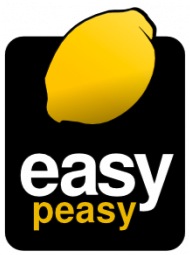Phrases Made Easy: “High Deductible Health Plan” (HDHP)
Welcome back to another edition of “Phrases Made Easy.” Our intention with this series is to help make all of those long, drawn-out insurance phrases easier for people to understand. One of our biggest goals is to give our clients and potential clients the power to put the things in place that make the most sense. Well-informed consumers can make a big difference.
This post is about High Deductible Health Plans (or HDHPs). We selected this phrase for a few different reasons:
- In many cases (but not all), High Deductible Health Plans (HDHPs) are the cornerstone of Consumer Directed Healthcare.
- High Deductible Health Plans are usually used in coordination with HSAs and HRAs.
- Consumer Directed Healthcare & High Deductible Health Plans are currently very popular within our industry.
To put the concept in perspective starting off, a High Deductible Health Plan (HDHP) usually works with other products in a system. Much like systems in a house: you have to have plumbing first to run your sink; you have to have electricity first before you can turn on your TV; and you need to have the walls and windows completed, before you turn on the heater or air conditioner.
 The visualization mentioned above is similar to the components that work with a High Deductible Health Plan (HDHP). There are four things that usually work in the system:
The visualization mentioned above is similar to the components that work with a High Deductible Health Plan (HDHP). There are four things that usually work in the system:
- A High Deductible Health Plan (HDHP)
- A Health Savings Account (HSA) or Health Reimbursement Arrangement (HRA)
- Supplemental Health Insurance
- Tax Incentives (Section 105/106 & 125)
The management and coordination of the above concepts all make up a system that can help people manage their own health services more affordably and efficiently. In most cases, the system we just described is commonly referred to as Consumer Directed Healthcare.
Here are some additional facts about High Deductible Health Plans (HDHPs):
- Insurance premiums can be most easily controlled by raising or lowering the deductible.
- A High Deductible Health Plan can be referred to as a “catastrophic plan” that covers the lion’s share of the bills in the event of a hospitalization. HDHPs also usually have at least one yearly wellness visit.
- Cash payments for other services (ie: deductibles, co-insurance, co-pays, physician visits, cash payments for lab work, cash payments for primary care, etc) can be funded w/ tax-advantaged (or sometimes tax-free) arrangements such as HSAs and HRAs. In most cases, unused cash is retained by individuals or employers.
- Cash payments through an HSA or HRA encourage providers (doctors, hospitals, and dentists) to be more transparent with their pricing.
- Additional concerns (accident, cancer, etc) can be “shored up” with supplemental health insurance plans.
- High Deductible Health Plans work very well with the evolving Defined Contribution Healthcare model.
A High Deductible Health Plan was defined in 2013 (for HSA qualification) as a plan with a minimum individual deductible of $1,250/year, and minimum family deductible of $2,500/year. Should you have further questions about how a High Deducible Health Plan might work for you, we encourage you to contact us any time.
Thanks for stopping by, we hope you found our information to be valuable. Check back at our blog to get further information about funding healthcare. Also, please share with your friends, clients, colleagues, and family. Here are a few of our other information outlets:
Home Page: https://policyadvantage.com
Twitter: http://www.twitter.com/policyadvantage
Facebook: http://www.facebook.com/policyadvantage
YouTube: http://www.youtube.com/policyadvantage
Pinterest: http://www.pinterest.com/policyadvantage
Word Press (you are here): http://www.policyadvantage.wordpress.com


